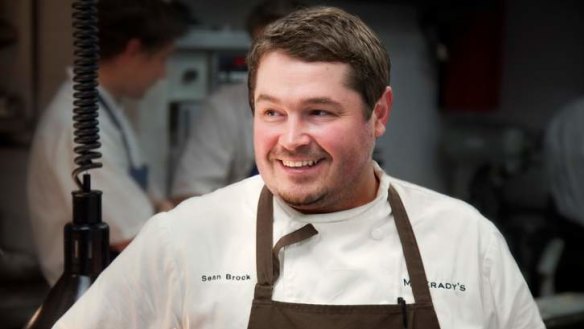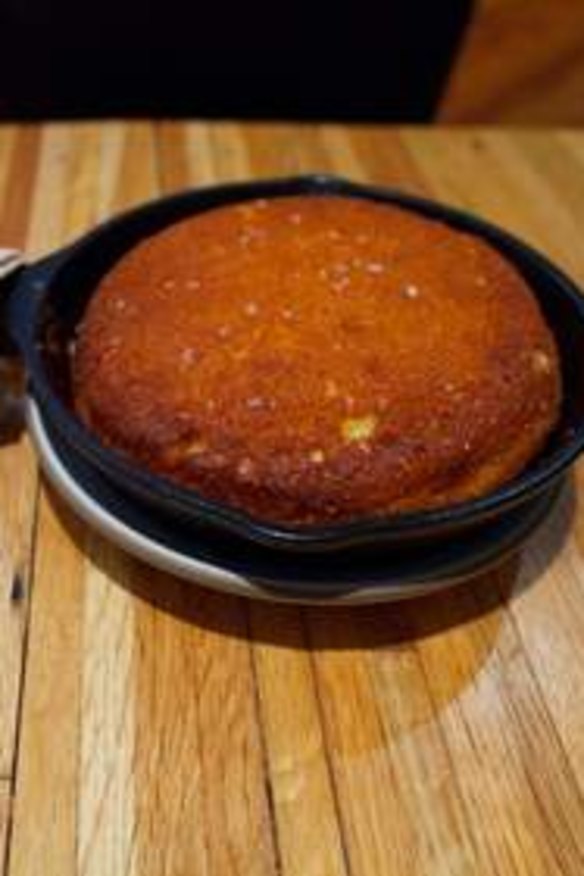True grits
Country boy Sean Brock delivers a modern take on all-American cuisine.

THREE YEARS IS A LONG TIME TO wait to get an ingredient for a dish you want to cook, but Sean Brock is a patient man. As one of America's most talked-about chefs, with two of the country's hottest restaurants in Charleston, South Carolina, Brock struggled to find the southern ingredients he needed for his modern take on what was once considered America's greatest cuisine, so he decided to grow them himself on a leased plot.
''It was a really stupid decision, because I'm a chef and not a farmer and I had no idea what I was doing,'' he says. ''But it was so hard to find people that wanted to grow these southern ingredients.'' At the same time, Brock started working with farmers, local historians and plant geneticists to painstakingly locate, analyse and grow native varieties of grains and vegetables, many at risk of extinction. To date, Brock has accumulated a substantial seed bank, stored in the attic at McCrady's -many seeds from his grandmothers' personal collection.
He's helping drive a revival of much-loved but often-maligned southern food.

''At Husk, Brock is re-creating what southern food once was. At McCrady's he's showing what it could be,'' wrote Burkhard Bilger in The New Yorker. Husk was named Bon Appetit's best new restaurant in America in 2011. For his menus, Brock scours the south - from Charleston to Nashville - for heirloom ingredients. But his true obsession is dirt. ''You can't revive, reboot, replicate or be inspired by a cuisine if you don't have the right plants. And you can't have the right plants, if you don't have the right dirt,'' Brock says.
''Hoppin' John is a simple bowl of rice and peas, an iconic dish that tells an incredible story of two cultures. But if no one is growing Carolina Gold rice or cowpeas [originally from Africa], your only choice is these products that taste like the cardboard boxes they come in. If it doesn't taste good, diners lose interest in the cuisine and when there's no dialogue, they start to lose interest in the culture. It all comes back to plants and dirt.''
But patience is a virtue - it can take up to three years from when a seed is located (anywhere from an abandoned field to a seed bank) through small-scale farming to increase stock levels, until the ingredient finally lands in Brock's kitchen.
While McCrady's has earned a reputation for inventive, molecular cuisine, Husk is dedicated to southern produce, simply prepared. ''If it ain't southern, it ain't walkin' in the door,'' Brock says.
At heart, Brock is a country boy who grew up in rural Virginia, but he can't resist the opportunities that modern kitchens afford. ''As much as I love history, you have to embrace a scientific mindset to understand why things do what they do,'' he says.
''Technology can make very delicious food - it can provide opportunities that the old-fashioned way simply can't,'' Brock says. ''The perfect example is the grits - grits are a very important part of our culture and we go to great lengths to find heirloom varieties of corn. But if we grind it in a piece-of-crap mill and we cook it the wrong way, then all that work goes down the drain.
''But if we embrace technology, we can find better ways to grind it and instead of cooking it on a stove for three hours, we can use a pressure cooker to reduce the cooking time and exposure to oxygen, preserving the volatile flavour compounds that we were chasing. Is it romantic? No. Is it delicious? Yes. It's a tightrope act that I have to walk and it's tough … but it's fun.''
But regardless, if Brock is cooking ''Charleston Ice-cream'' - an elegant bowl of Carolina Gold rice, a tribute to one of Brock's favourite ingredients - at McCrady's, or deep-frying pig's ears at Husk, he has one golden rule. ''All you have to do is ask yourself one simple question: is what I'm doing making this product more delicious?''
In 2013, Brock shows no signs of slowing. A second Husk restaurant is slated for Nashville and he is in the throes of writing a cookbook. In March, Brock will play host to Ben Shewry at the Charleston Wine and Food Festival, before boarding a plane for the Melbourne Food and Wine Festival days later.
''I can't wait, I've never been to Australia, I'll eat five meals a day,'' Brock says. ''My buddies Magnus [Nilsson] and [David] Chang are going to be there, so we're going to be terrorising the streets.''
Sean Brock will be presenting at the Langham Melbourne MasterClass, as part of the Melbourne Food and Wine Festival, on March 9 and 10; Brock will also be cooking at Union Dining on March 12.
Husk cornbread
2 cups coarse yellow cornmeal
½ tsp baking soda
½ tsp baking powder
5 tbsp bacon fat
1 egg
1½ cups fresh buttermilk
2 tbsp bacon pieces
1. Heat the oven to 230C. Place a 25cm cast-iron skillet inside.
2. Mix all the dry ingredients together in a bowl.
3. Combine four tablespoons of bacon fat, egg, buttermilk and bacon pieces in a bowl. Stir the dry and wet mixtures together, until smooth.
4. Remove skillet from the oven and add one tablespoon of bacon fat to coat (it should sizzle).
5. Pour in the batter, distributing evenly.
6. Cook for approximately 15 to 18 minutes, or until a skewer inserted in the middle comes out clean.
7. Serve in the skillet.
Tip If using a wood-fired oven, cook cornbread at 430C for about eight minutes, or until a skewer inserted in the middle comes out clean.
Restaurant reviews, news and the hottest openings served to your inbox.
Sign up